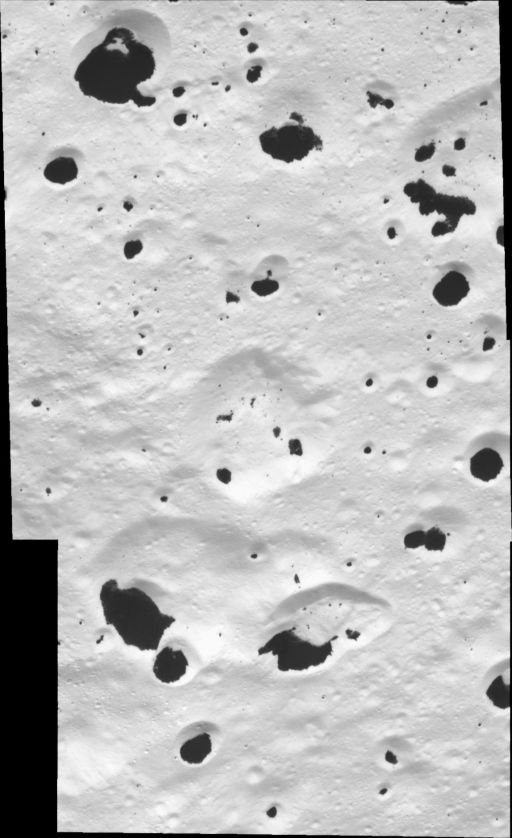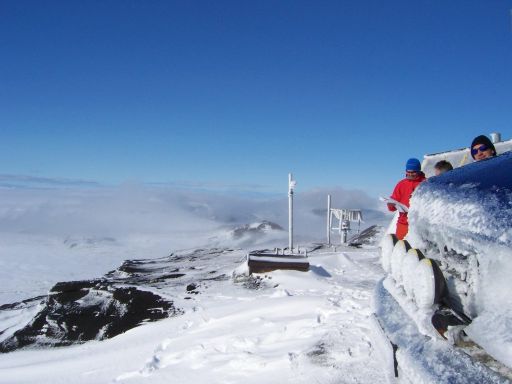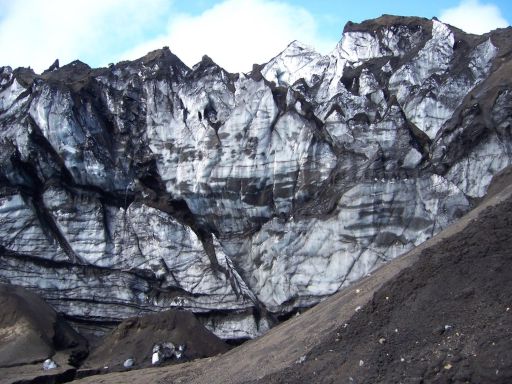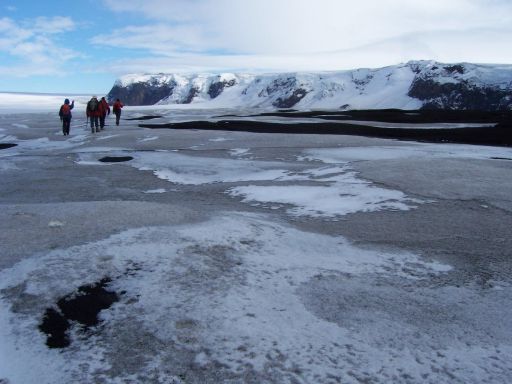Jani Radebaugh • Aug 01, 2009
Iceland on Iapetus?
by Jani Radebaugh
In our search for solar system analogs, we'll jump now to the northern hemisphere -- way north -- to Iceland. Last year I attended a field excursion to the Grimsvotn volcano in association with the IAVCEI (International Association of Volcanology and Chemistry of the Earth's Interior) meeting held in Reykjavik. This excellent field trip was run by Magnus Gudmundsson of the University of Iceland, and included several planetary scientists (James Head, James Rice, Jarmo Korteniemi, Chris Hamilton, Motomaro Shirao). Since the Grimsvotn volcano sits partially underneath the largest continental glacier outside Greenland or Antarctica, the Vatnajokull Glacier, we drove up the rough western glacier ablation zone, onto the glacier itself, across the glacier to its interior where the volcano sits, and across the glacier to the southeastern terminus. This all took over 16 hours of driving alone. The Icelandic Glaciological Survey drove us across the glacier, in modified trucks and vans so tricked out they were nearly unrecognizable. The tires were almost as tall as me, and the vehicles drew lots of attention wherever we went. We were privileged to stay at the Glaciological Survey huts on the rim of Grimsvotn, providing us a good vantage point into the volcano interior and giving us a good base for exploring the volcano.

Spotty Iapetus
t high resolution, terrain in the transition region between bright and dark hemispheres on Saturn's moon Iapetus reveals a spotty appearance reminiscent of a Dalmatian. The bright material on the frozen surface of Iapetus, 1,468 kilometers (912 miles) across, is water ice, and the dark material is likely carbonaceous in composition. The dark material is preferentially found at the bottoms of craters. Bright water ice forms the "bed rock" on Iapetus, while the dark, presumably loose material apparently lies on top of the ice.
Support our core enterprises
Your support powers our mission to explore worlds, find life, and defend Earth. You make all the difference when you make a gift. Give today!
Donate

 Explore Worlds
Explore Worlds Find Life
Find Life Defend Earth
Defend Earth




